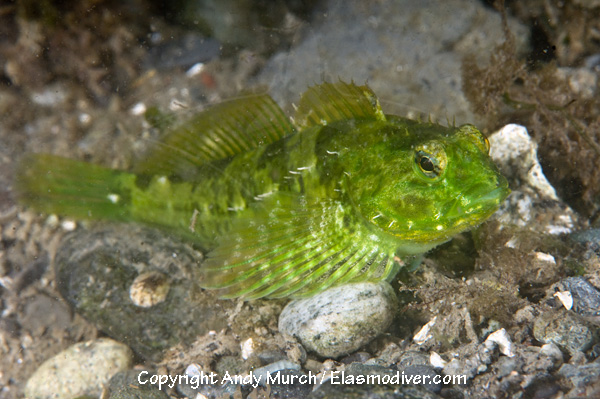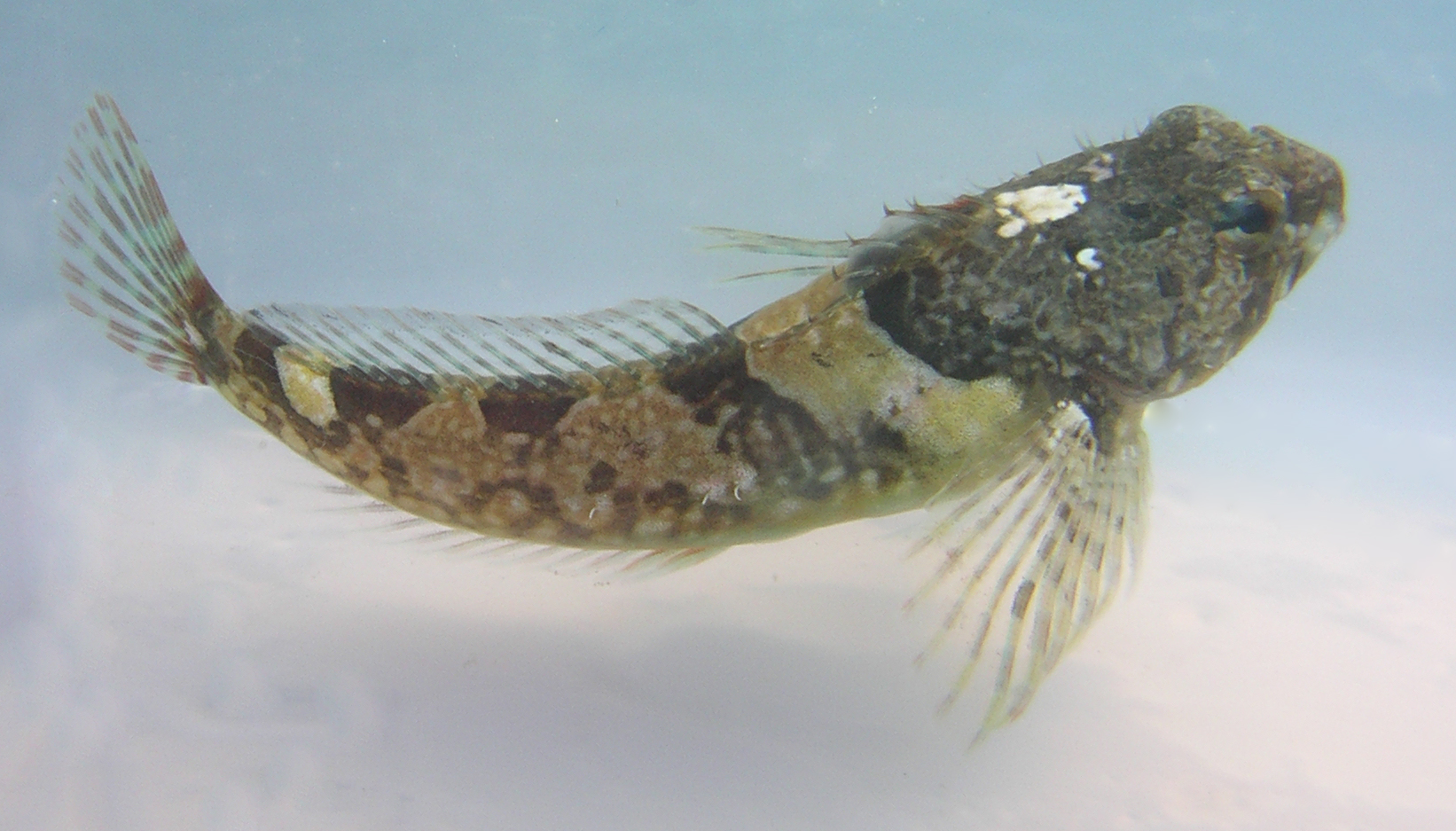
Oligocottus maculosus
FAMILY
Cottidae
TAXONOMY
Oligocottus maculosus Girard, 1856, Neah Bay, Washington,
United States.
OTHER COMMON NAMES
English: Tidepool johnny.
PHYSICAL CHARACTERISTICS
Typical sculpin body form, with a small, elongate body, to 2 in
(5.1 cm), and a relatively large head. Tidepool sculpins have
varying numbers and sizes of cirri on their body, singly or in
pairs, especially in the head region. They have one forked
cheek spine. Color is banded light and dark gray, sometimes
with red or green shades. Newly settled young have red fin
rays on the tail.
DISTRIBUTION
Coastal waters from the Los Angeles Bight to the Bering Sea
and the Sea of Okhotsk.
HABITAT
Many scientific studies of tidepool sculpins living in tidepools
have led to the opinion that this species is an obligate dweller
of tidepools. Ironically, spawning is much more dense in protected
areas without tidepools than on exposed headlands
where pools are formed. Furthermore, tidepool sculpins are
abundant in inlets where no tidepools occur, and they strand
under rocks during low tides in areas without tidepools. Thus,
the tidepool sculpin is a facultative inhabitant of tidepools
where they occur, but does not require them to make a living.
BEHAVIOR
When it occurs in tidepools, the tidepool sculpin exhibits homing
BEHAVIOR
when displaced from a home pool. The sense of
smell appears to assist in home site recognition.
FEEDING ECOLOGY AND DIET
Small crustaceans like amphipods or harpacticoid copepods.
REPRODUCTIVE BIOLOGY
Although it is not known whether this species has internal gametic
association, the female mates and then deposits egg clusters
in spaces between barnacles or mussels. The eggs are
either emerald green, dark green, or maroon. Maroon eggs are
laid on shores exposed to wave action, but the same females,
removed from exposed shores, in captivity lay green eggs the
next season. On small stretches of shore that either gradate or
abruptly shift from wave exposure to protection from waves,
the proportion of maroon to emerald eggs similarly gradates or
shifts abruptly. The egg pigment may reflect some physiological
response of the female to the gas saturation of the seawater,
but the subject remains a mystery, as does the polymorphism
for egg color in many other sculpin species.
CONSERVATION STATUS
Not threatened. This is the most abundant and commonly occurring
shoreline fish in many parts of the Pacific Northwest.
It would probably be one of the last species to disappear in the
face of environmental degradation.
SIGNIFICANCE TO HUMANS
The tidepool sculpin is the most easily observed fish in many
tidepools, and it has been of great interest to students of intertidal
biology.
Other popular Animals
Photo Gallery of - Tidepool sculpin





 Animalia Life
Animalia Life